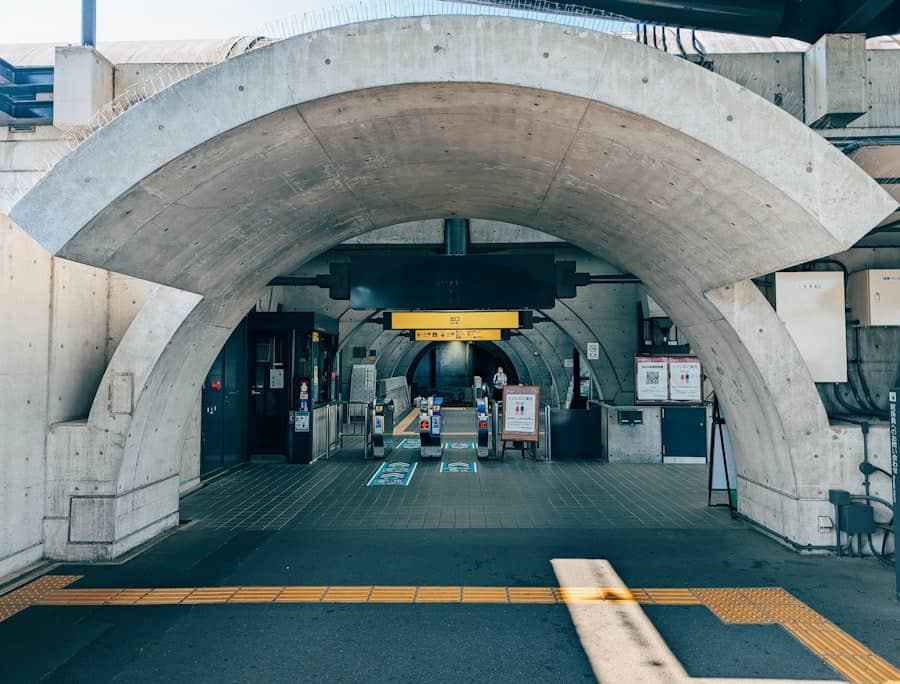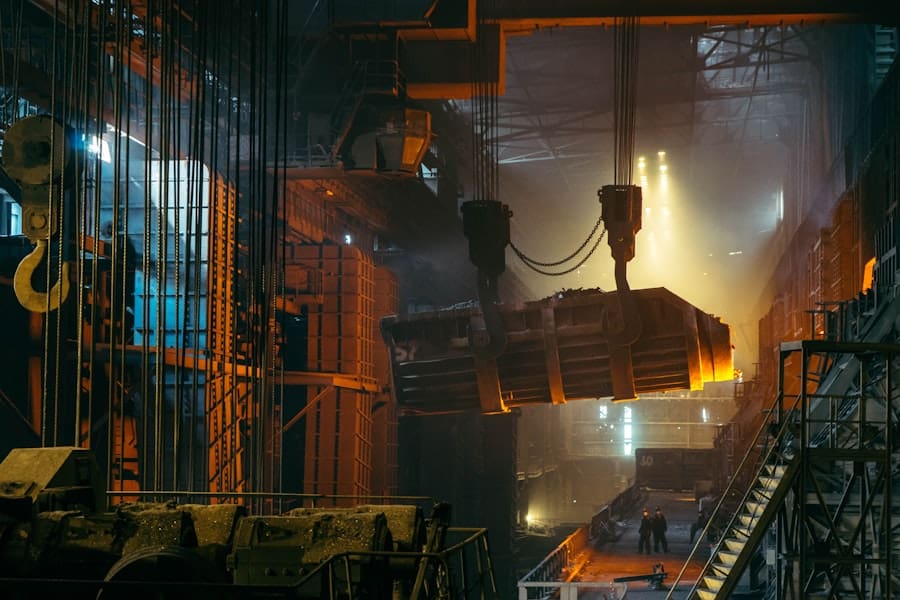The integration of robotics into large-scale infrastructure projects marks a transformative shift in the construction and engineering sectors. As urbanization accelerates and the demand for infrastructure grows, traditional methods of construction are increasingly being supplemented or replaced by robotic technologies. These innovations not only enhance efficiency but also address the complexities and challenges associated with large-scale projects.
Robotics encompasses a wide range of technologies, including automated machinery, drones, and artificial intelligence, all of which contribute to the modernization of infrastructure development. The adoption of robotics in infrastructure projects is driven by several factors, including the need for improved safety, cost-effectiveness, and precision.
Furthermore, the ability to automate repetitive tasks allows for a more streamlined workflow, reducing the time required to complete projects. As these technologies continue to evolve, they promise to redefine the landscape of construction, paving the way for smarter, more resilient infrastructure.
Key Takeaways
- Robotics play a crucial role in large-scale infrastructure projects by automating tasks and improving efficiency.
- Current applications of robotics in infrastructure projects include autonomous vehicles, drones for surveying, and robotic arms for construction tasks.
- The advantages of using robotics in infrastructure projects include increased safety, reduced labor costs, and improved precision and accuracy.
- Challenges and limitations of robotics in infrastructure projects include high initial investment, limited adaptability to complex environments, and potential job displacement.
- Emerging technologies and innovations in robotics for infrastructure projects include 3D printing, AI-powered construction management, and advanced robotic exoskeletons for workers.
Current Applications of Robotics in Infrastructure Projects
Surveying and Mapping
Drones equipped with high-resolution cameras and LiDAR technology are being used to capture detailed aerial imagery and topographical data. This information is crucial for planning and design phases, allowing engineers to assess site conditions accurately and make informed decisions. Companies like Skycatch have developed drone solutions that enable real-time data collection on construction sites, significantly enhancing project management capabilities.
Construction Automation
Robotic arms and 3D printing technologies are being used to fabricate building components with high precision. ICON, a construction technology company, has pioneered the use of 3D printing to create affordable housing structures. Their Vulcan printer can produce a home in just 24 hours, demonstrating how robotics can expedite the construction process while maintaining quality standards.
Material Transport and Logistics
Autonomous vehicles are being deployed for material transport on construction sites, reducing labor costs and minimizing human error. This application of robotics is further streamlining the construction process, making it more efficient and cost-effective.
Advantages of Using Robotics in Infrastructure Projects

The advantages of incorporating robotics into infrastructure projects are manifold and can lead to substantial improvements in various aspects of construction. One of the most significant benefits is enhanced safety. By deploying robots to perform dangerous tasks—such as working at heights or handling hazardous materials—companies can significantly reduce the risk of accidents and injuries on job sites.
For example, robotic exoskeletons are being developed to assist workers in lifting heavy materials, thereby minimizing strain-related injuries. Moreover, robotics contributes to increased efficiency and productivity. Automated systems can operate continuously without fatigue, allowing for faster project completion times.
This is particularly beneficial in large-scale projects where delays can lead to significant financial losses. The use of robotics also enables more precise execution of tasks, reducing waste and rework.
As a result, projects can be completed on time and within budget, enhancing overall profitability.
Challenges and Limitations of Robotics in Infrastructure Projects
Despite the numerous advantages that robotics offers, there are also challenges and limitations that must be addressed for successful integration into infrastructure projects. One major challenge is the high initial investment required for robotic technologies. The cost of purchasing advanced machinery and training personnel can be prohibitive for smaller firms or projects with tight budgets.
This financial barrier may hinder widespread adoption, particularly in regions where resources are limited. Additionally, there are concerns regarding the reliability and maintenance of robotic systems. While technology has advanced significantly, robots can still experience malfunctions or require repairs that may lead to downtime on construction sites.
Ensuring that these systems are robust enough to withstand the rigors of construction environments is crucial for their long-term viability. Furthermore, there is a need for skilled operators who can manage and maintain these technologies effectively. The shortage of qualified personnel poses another challenge that the industry must overcome to fully leverage the potential of robotics.
Emerging Technologies and Innovations in Robotics for Infrastructure Projects
The field of robotics is continuously evolving, with emerging technologies poised to further enhance their application in infrastructure projects. One notable innovation is the development of collaborative robots, or cobots, which are designed to work alongside human workers safely. These robots can assist with tasks such as lifting heavy materials or performing repetitive actions, thereby increasing productivity while reducing the physical strain on workers.
Companies like Universal Robots are at the forefront of this technology, providing solutions that integrate seamlessly into existing workflows. Another exciting area of innovation is the use of artificial intelligence (AI) in robotics for infrastructure projects. AI algorithms can analyze vast amounts of data collected from construction sites to optimize processes and predict potential issues before they arise.
For instance, machine learning models can be trained to identify patterns in project delays or cost overruns, enabling project managers to make proactive adjustments. Additionally, AI-powered drones can autonomously navigate complex environments to conduct inspections or monitor progress without human intervention.
Future Trends and Opportunities for Robotics in Infrastructure Projects

Sustainability and Green Building Practices
One such trend is the growing emphasis on sustainability and green building practices. Robotics can contribute to these efforts by optimizing resource use and minimizing waste during construction processes. For example, robotic systems can be programmed to use materials more efficiently or recycle waste generated on-site, aligning with environmental goals.
The Rise of Smart Cities
Moreover, as smart cities continue to emerge globally, the integration of robotics into urban infrastructure will become essential. Autonomous vehicles and drones will likely play critical roles in transportation systems, logistics management, and urban planning.
Innovative Solutions for Modern Cities
The development of smart infrastructure—such as self-repairing roads or buildings equipped with sensors—will further enhance the functionality and resilience of urban environments. This presents significant opportunities for companies specializing in robotics to innovate and provide solutions that meet the demands of modern cities.
Impact of Robotics on the Construction Industry
The impact of robotics on the construction industry is profound and multifaceted. By automating various aspects of construction processes, robotics has the potential to reshape workforce dynamics significantly. While there are concerns about job displacement due to automation, it is essential to recognize that robotics can also create new job opportunities in areas such as robot maintenance, programming, and oversight.
The industry will require a workforce skilled in both traditional construction methods and advanced technologies. Furthermore, the implementation of robotics can lead to improved project outcomes through enhanced collaboration among stakeholders. With real-time data collection and analysis capabilities provided by robotic systems, project managers can make informed decisions based on accurate information rather than estimates or assumptions.
This transparency fosters better communication among teams and clients, ultimately leading to higher satisfaction rates and stronger relationships within the industry.
Conclusion and Recommendations for Integrating Robotics in Infrastructure Projects
To fully harness the potential of robotics in infrastructure projects, it is crucial for stakeholders across the industry to adopt a strategic approach to integration. First and foremost, investment in training programs for workers is essential to ensure they possess the necessary skills to operate and maintain robotic systems effectively. Educational institutions should collaborate with industry leaders to develop curricula that address these needs.
Additionally, fostering partnerships between technology providers and construction firms can facilitate knowledge sharing and innovation. By working together, these entities can identify specific challenges within projects that robotics can address effectively. Furthermore, regulatory frameworks should evolve to accommodate new technologies while ensuring safety standards are maintained.
In summary, while challenges exist in integrating robotics into large-scale infrastructure projects, the potential benefits far outweigh these obstacles. By embracing innovation and investing in workforce development, the construction industry can position itself at the forefront of this technological revolution, ultimately leading to safer, more efficient, and sustainable infrastructure development.
In a recent article discussing the future of robotics in large-scale infrastructure projects, it is fascinating to consider the potential impact of advanced technology on construction and development. As highlighted in

